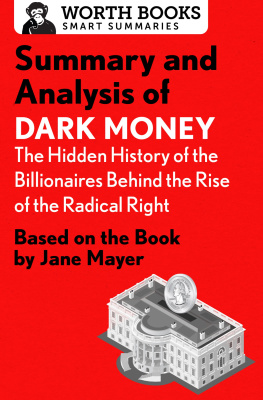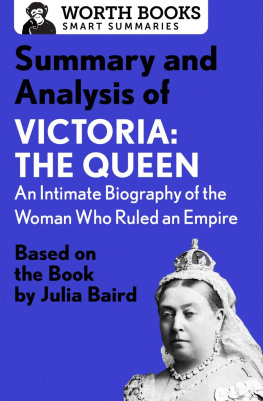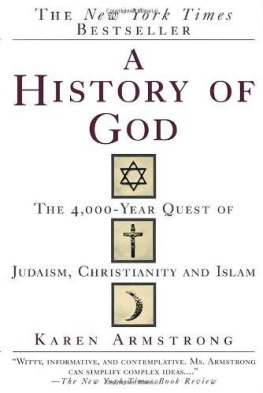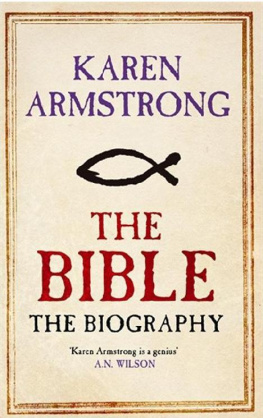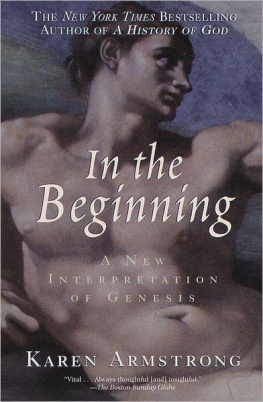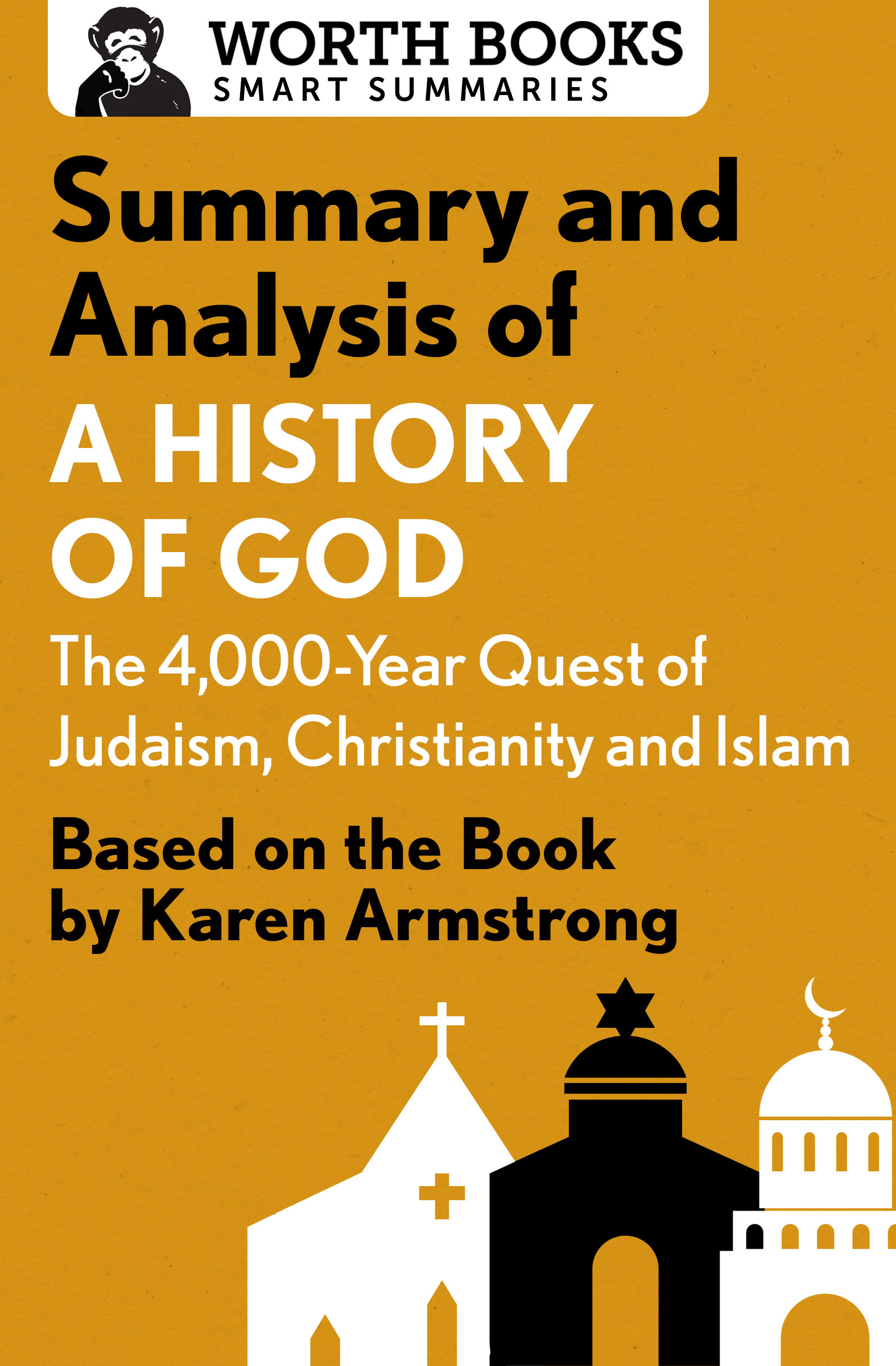Summary and Analysis of
A History of God
The 4,000-Year Quest of Judaism, Christianity and Islam
Based on the Book by Karen Armstrong

Contents
Context
Karen Armstrongs A History of God , published in 1993, represents the culmination of her lifes work as a former nun, researcher, and historian of religion. It was also her most popular book. A few years before its publication, the United States invaded Iraq for the first time in Operation Desert Storm, and anti-Arab and anti-Muslim feelings were on a dramatic rise in both Europe and America. Anti-Western feelings were on the rise in the Arab world as well. Armstrongs book can be considered prescient on this matter; after the attacks of 9/11/01, animosity toward Muslims (as well as toward Jews and Christians, depending on the country) was becoming far more common than ever before. With the Ayatollahs fatwa against author Salman Rushdie in 1989, and President George W. Bushs professed guiding faith in Jesus Christ, as well as less publicized events like the rise of Buddhist fascism in Sri Lanka, there seemed little chance for peace to take root among the different faiths.
Yet Armstrongs intent is not simply to advocate for decency and peace among people of various faiths, it is to demonstrate the central idea that the study of the historical place of God in society, instead of knee-jerk judgment of religious believers, can push society in a better direction. Armstrong points out that, historically, when a conception of God no longer worked or fit well into a society, it was simply discarded in favor of a new one. If we can see ourselves, or our cultures, in this process of Gods transformation over time, and recognize that religious fundamentalism and the contemporary fadssuch as yoga and meditationemerge out of quantifiable historical events, some understanding of religions place could lead to a less antagonistic and more compassionate world.
Long ago, a slew of once-antithetical pagan beliefs were unified under Judaism. God was then personalized as Jesus Christ. Scientific or philosophical understanding of God was pursued strongly by Muslim Faylasufs and the ancient Greek philosophers. In the nineteenth century, God was declared dead by logical positivists and academics. And today, although atheism is on the rise, religious fundamentalism seems to be an indelible fact of modernity. Throughout history, God was a central part of the story of human life on earth, and nothing about our present circumstance suggests that will ever change.
In 2009, Armstrong founded the Charter for Compassion, which urges people of all faiths to embrace one another in understanding. More than 110,000 people have signed on or support it in some way, including major global figures like the Dalai Lama. In 2010, Seattle, Washington, became the first city to affirm the charter.
Overview
Armstrongs intent in A History of God is to show how God, throughout history, has been reshaped or reconstituted according to new or emerging cultural contexts. Because of the apparent necessity for the divine in human life, God has never been fully abandoned, and for this reason all three major religions (Judaism, Christianity, and Islam) resemble each other as much as they may differ.
Judaism is the oldest of the monotheistic religions of the West and so Armstrong begins with its founding. Various threadspaganism, agriculturalism, centralization of powerfed into the emergence of Yahweh as the one true God. Over the thousands of years between the height of paganism in the Fertile Crescent and the composition of the Old Testament around the fourth or fifth century BCE, monotheism itself was an unknown idea. The Canaanites, Sumerians, Babylonians, and many others had their own deities, with every aspect of life accounted for in a God of its own (fertility gods, war gods, etc.). During the period from 800200 BCE , Judaism was the predominant religion in the Middle East. At this same time, Hinduism and Buddhism were solidifying their own dogma in East Asia and India. This period of religious flourishing and the reorganization of hunter-gatherer societies to fundamentally agricultural and monotheistic civilizations is why this period is known as the Axial or pivotalAge.
Up to the Christian era, Judaism appeared, more and more, to be putting distance between its adherents and an unstable, vengeful God. Christianity emerged, some say, as a way of personalizing God and injecting compassion into a faith that otherwise relied only on law and ritual. What is most surprising about Christianity is the rapidity with which it took hold. The Catholic Church, for instance, was founded in the first century after Christs death, and within a few hundred years it became the state religion of the Holy Roman Empire.
Islam came about in the Middle East in the early seventh century ( CE ) in a culture enriched, on the one side, by a long history of pagan faiths and, on the other, by an intellectual and physical proximity to the culture and thought of Greek philosophers. Once founded, Islam spread even quicker than Christianity, and took on much of the heavy lifting in terms of intellectual and philosophical thought that was irrelevant to a Christian Europe largely in crisis. Islam promoted the study of natural science, philosophy, economics, theology, and ecumenicalism; this was a period when the Islam-dominated region of southern Spain, or Andaluca, was known as the Jewel of the World. Great thinkers traveled there for instruction and Jews, Muslims, and Christians all lived in relative peace until the Spanish Inquisition forced all non-Christians out of Europe in 1492.
Following the Middle Ages and the Enlightenment, society in Europe began to see human existence as the result of reasonable principles, which it would be possible to uncover through empiricism and sheer study. In the ensuing centuries, wherein colonialism, capitalism, industrialism, and social programs like Marxism and socialism reshaped society, the possibility of a true atheism emerged.
By the twentieth and twenty-first centuries, Nietzsche had declared God dead. People were turning away from scripture and toward the theories of Freud, Marx, and Darwin to explain their world. Yet at the same time, a frightening new religious fundamentalism in all quartersJudaism, Islam, and Christianitytook hold across the world. These factors are still at work in modern society, and it appears that they will shape our world long into the future.
Summary
1. In the Beginning...
The modern idea of God, the theistic narrative we would be familiar with today, can be traced back to the Middle East some 14,000 years ago. The Sumerians, Babylonians, Persians, Egyptians, Greeks, and Canaanites all founded their own systems of faith and ritual around this time. This complicated and vast religious growth was a response to what the ancients viewed as the unsolvable mystery of existence, variously called mana , numina , jinn : the occupants of the unseen spiritual world. Initially, the central figure or High God was seen as the Great Mother or Sky God: Inana to the Sumerians, Ishtar to the Babylonians, Aphrodite in Greece. Smaller deities, like her children, and stories emerged to explain humanitys struggle on earth, but there was no separation, ultimately, between human life and the sanctified gods. As power shifted in the Oikumene (civilized society), the old ways of the maternal God with her various emanations made way for a father God, a jealous, warring deity and a conception we recognize in the Bibles Yahweh. This occurred around the Axial Age (800200 BCE ), and had contemporaneous parallels in China and India where Taoism, Buddhism, and Hinduism began to flourish in their own way. In response to Greek and Arab philosophy, and as societies changed, agriculture predominated, and the noble and merchant classes arose, a new explanation was needed to bind society together, and the various religions and cults began to move toward the acceptance of a single, monotheistic God, rather than a Great Mother flanked by her many subdeities.




